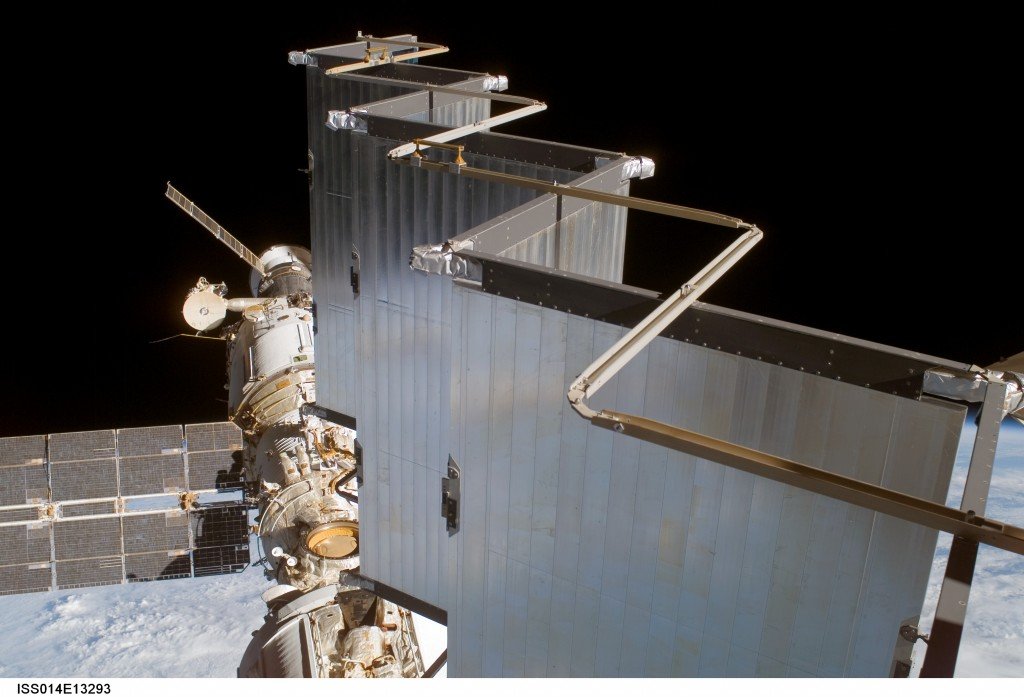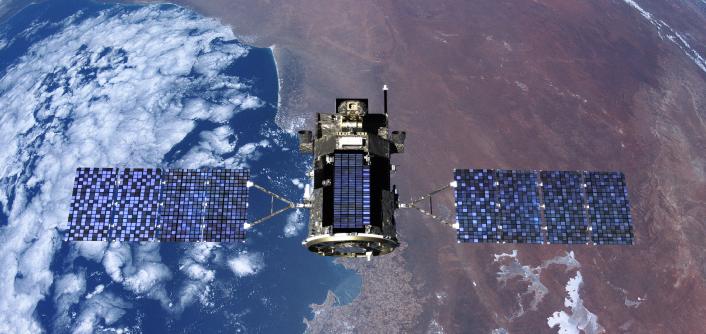What's in a satellite?

Key Points
- Satellites tend to be the same six systems used in different combinations. You can probably predict what they’ll be with a little time spent thinking about it..
- There hasn’t been much change in the types of systems for several decades so understanding things now will be useful to you throughout your career.
Introduction
This is the article for you if you want an entry-level overview of what makes up a satellite system. We’ll talk about everything at a high level and include links for things if you want to dig deeper.
Predict What You’d Need
Imagine you want to build a satellite that takes a picture of your house. And imagine you know absolutely nothing about satellites other than they go around the Earth. But you’re a problem solver, so you sit and think about what you’d have to do. What might you imagine you’d need? You might come up with the following systems:
- A Camera: If we’re going to take pictures, we should have a camera.
- Some sort of structure: Something has to hold the camera and whatever else
- A radio: We’ve got to be able to get our pictures
- A computer: Something has to run everything
- A way to twist the spacecraft to point at things: We need some way to get it to point at your house. Maybe we use little thrusters or something to twist the satellite around?
- Power: We’ve got to keep things running, at least until we get our pictures
- Maybe some sort of heater: Maybe it’s too cold up there and maybe it’s not. We don’t know, but we should make sure our camera doesn’t freeze
- Something about radiation? Is that important? Maybe yes, maybe no, but we’ll add it to the list of things to check.
Out of that list, there are just six things that it seems like we’d need and the other two are maybes. And it turns out that list covers most of the satellites that have ever flown in space. Even Hubble and JWST are just fancy cameras with radios, power, computers, a pointing system, a thermal system, and a structure that holds everything.
So why are satellites expensive and why do big programs have thousands of workers? We’ll have an article soon that talks about that more. For now, let’s go over the primary systems in a satellite.
Payload

Image Credit: NASA
A payload is anything the spacecraft carries. It could be a telescope, a big antenna, or even people. Every mission starts with understanding what success looks like and then working backward to figure out all the other systems. In our example above, the camera would be the payload.
Structure

Image Credit: NASA
This is what holds all of your stuff and attaches to the rocket. Most satellites look like boxes with things bolted on. This is because it’s the easiest type of structure to manufacture, test, and attach things to. It looks simple because the concept is simple!
Side note: a lot of places call the main structure the bus, which is short for omnibus, which means “for all”, according to etymonline.com. The concept is it carries everything on it.
Communications

Image Credit: NASA
This is how you talk to the satellite and how it talks to you. In a lot of ways, this is a “solved” problem: Send certain photons in a certain pattern and you’re done. We’ve been doing it for decades from the fringes of the solar system and there are lots of commercial solutions you can buy.
Computers
Image Credit: BAE Systems, which sells the RAD750 used in many satellites
A lot of people call this “Avionics”. It’s the circuit boards and the software that listens to everything and makes decisions. You may have heard that satellite computers are old and slow. That’s true but getting better. Radiation from the universe and the sun causes failures in the little wires and chips so those things need to be robust and that usually means slow (and expensive).
Thermal

Image Credit: NASA
You may be surprised to learn that the problem is things get too hot in space. In fact, it’s around room temperature inside a lot of them! It’s true, though, that space is very cold. Satellites get hot because, first, the sun is shining directly on them and, second, all the electronics and payloads generate heat. Getting rid of it is hard when all you can do is radiate it. Thermal engineers find the balance between protecting the system from getting too hot or too cold.
Control Systems

Image Credit: NASA
These twist and push spacecraft around. Moving is usually done with thrusters and twisting is usually done with some sort of wheel that spins or gets flipped over. There are several other options we’ll take a look at.
This system also includes things that tell you which way you’re pointing. Sensors like sun, earth, and star trackers tell you which way you’re pointing. And GPS works in space so that helps you get the position.
Power

Image Credit: NASA
Solar panels and batteries are part of virtually every spacecraft (there are a few that use nuclear-based power). A challenge tends to be managing the fact that you get 45 minutes of daylight and then 45 minutes of darkness (depending on your orbit) as you go around and around the earth. Satellites like the one in the image above usually put their panels on arms that can twist to track the sun.
Everything Else
This article talked about the systems in a satellite. There’s so much more to get done, though. Whole careers are spent on designing the ground systems, support equipment, test labs, and, yes, the paperwork. We’ll have an article soon about the many careers in the space industry.
Curated YouTube Videos
Here are a few videos we liked that may help you learn:
- https://www.youtube.com/watch?v=ror4P1UAv_g
This gives a high-level overview of what a satellite is and what some of the components are and it does this with pretty good animation. It starts discussing what the components are at the 4-minute mark.
- https://www.youtube.com/watch?v=zU9mbtEglwc
This is a very good animated overview of all the things related to satellites. They talk about the components starting about minute five, but it’s worth watching the whole thing if you’re new to the space industry. This was created in Russia so some of the translation is a little stilted. - https://www.youtube.com/watch?v=4PXuVyC6kLc
A shorter video that covers several of the systems with images - https://www.youtube.com/watch?v=iXRjHp_p1n4
This is a slower-paced video with outstanding graphics. Side note: they use terms like "ADACS", which are not necessarily used in other organizations, but the concepts are the same. - https://www.youtube.com/watch?v=T0XRB5hMXS0
NASA put this CubeSat assembly video together for their iodine engine system. It's great for showing the major subsystems and where they get assembled relative to each other and the structure.
Curated Links
And here are a few links on other sites that may help you learn:
- https://www.britannica.com/technology/satellite-communication/Satellite-applications
Encyclopedia Britannica has a good write-up of satellite systems and some of the challenges they face. They don’t use the same terms used in this article and you’ll find that different people will use even different terms. The concepts are about the same, though. - https://www.space.com/24839-satellites.html
Space.com has an overview where they list four primary systems. (They don’t include things like structure and thermal as primary systems. You could argue those two things are more like functions or supporting systems than true systems.) - https://science.howstuffworks.com/satellite4.htm
How Stuff Works has a series of pages covering satellites with page four having a few paragraphs about the systems you’ll find in them.
 Space Steps
Space Steps